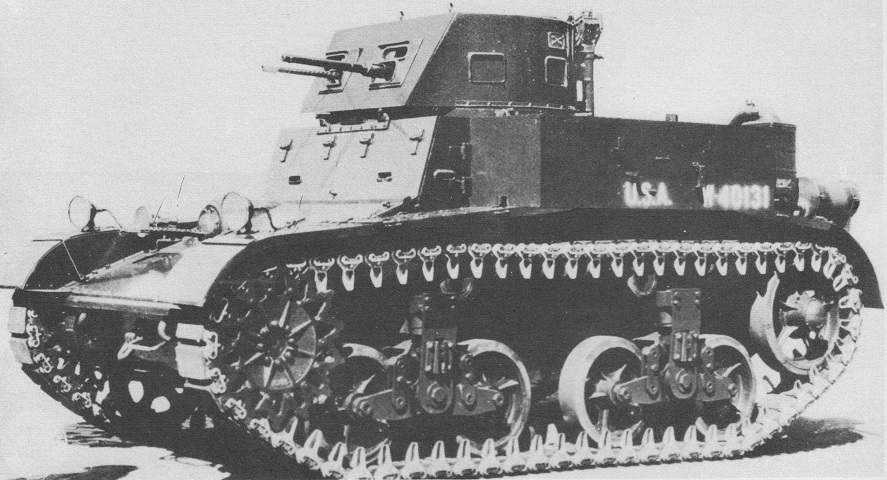
Combat Car M1.

This combat car M1, serial number 32, is topped by the early, D-shaped turret. The anti-aircraft machine gun mount can be seen on the turret's left rear. This vehicle is armed with a .50cal MG in the turret's left-side M15 mount, and .30cal MGs in the right side of the turret and in the M8 bow MG mount. The crossed sabre emblem of the Cavalry can be seen just above the turret pistol port. The siren is behind the barrel of the bow machine gun. (Picture from Development of Armored Vehicles, volume 1: Tanks.)
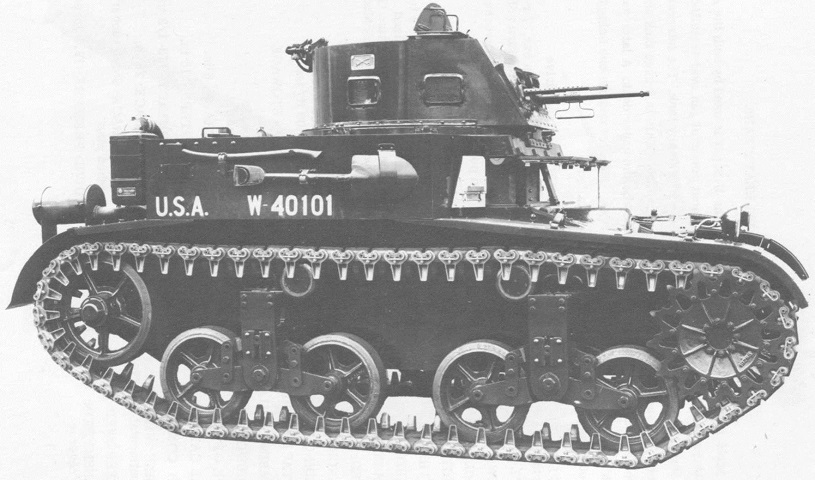
Pioneer tool stowage is visible on this side of the vehicle, and the drivers' doors and turret roof are open. The cylindrical engine exhaust is mounted on the rear fender, and on the rear of the sponson is an engine air filter. (Picture from Tank Data, vol. 2.)
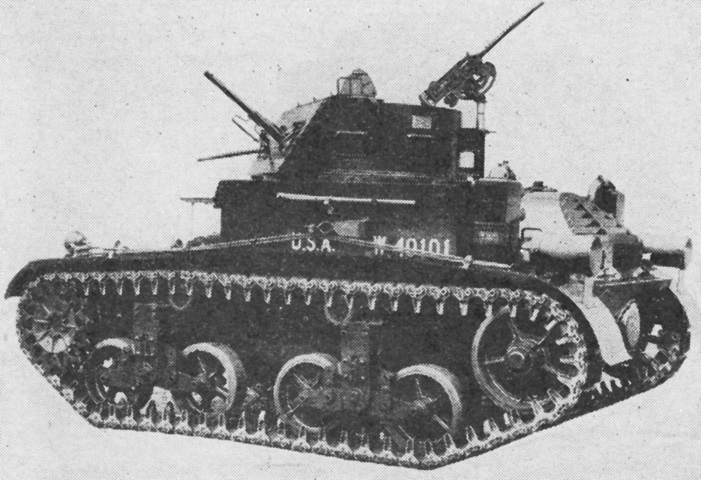
This very early combat car retains the rounded engine cover and round turret. The turret roof is folded forward, and the semicircular vertical shield formed by the turret roof plates is visible. (Picture from FM 30-40 C1 Military Intelligence Identification of United States Armored Vehicles.)
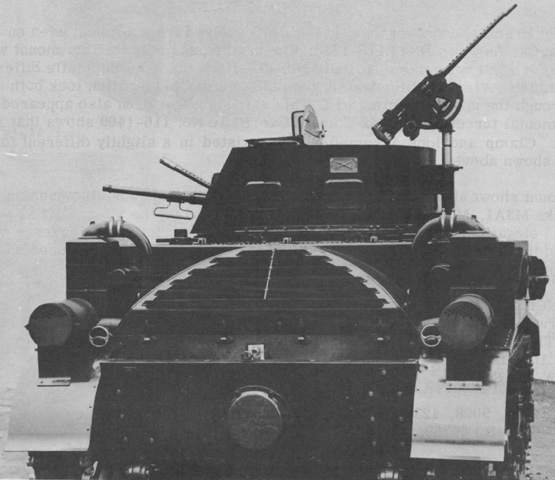
A better view of the rounded engine cover is provided here, and the turret roof is again folded forward. The piping from the air cleaners immediately descends into the engine compartment, which was a characteristic of combat cars with gasoline radial engines. Taillights are just inboard of the engine exhausts on the rear fenders, and the antiaircraft machine gun is in the raised position in its elevator bracket mount. The engine was protected by a fixed 7½lb (3.4kg) CO2 fire extinguisher, and a 4lb (1.8kg) portable CO2 was also carried. One 12-volt battery was used for the electrical system. (Picture from Weapon Mounts for Secondary Armament.)
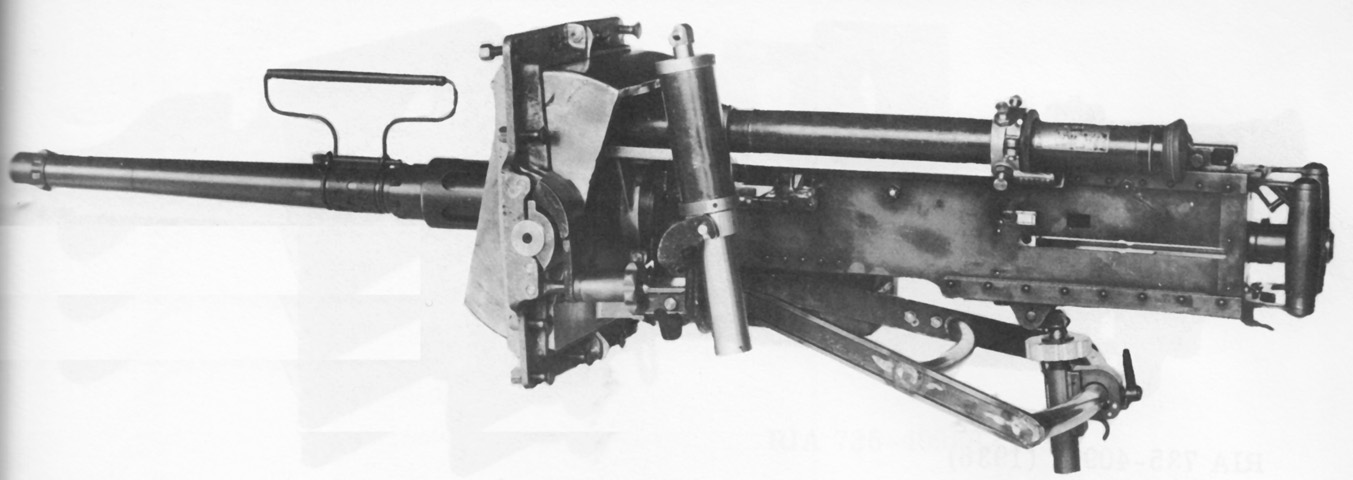
The .50cal machine gun is shown in the turret mount M15, in which the rotor served dual purpose as a shield. The gun was attached to a traversing pintle in the base of the rotor by its front mounting holes, while elevation was by pivoting the rotor on its horizontal trunnions. A locking device on the left trunnion allowed a desired elevation to be set. The gun's rear mounting holes were used to connect the gun to the rear crossbar on the triangular handlebar via an elevation and traversing mechanism. A telescopic sight M1918 was mounted on the left side of the gun, inboard of an equilibrating rod assembly, and the ammunition tray was on the right. (Picture from Weapon Mounts for Secondary Armament.)
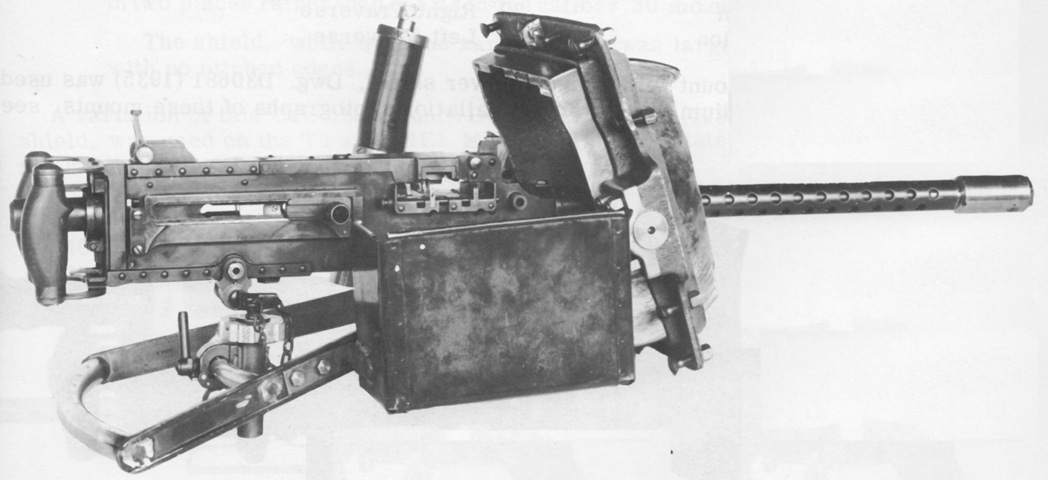
The .30cal machine gun is shown from the opposite side in the turret mount M16. Similar to the mount M15 above, the M16 dispensed with the sighting telescope, and the shorter gun was attached by the elevation and traverse mechanism to the inner crossbar on the handlebar. (Picture from Weapon Mounts for Secondary Armament.)
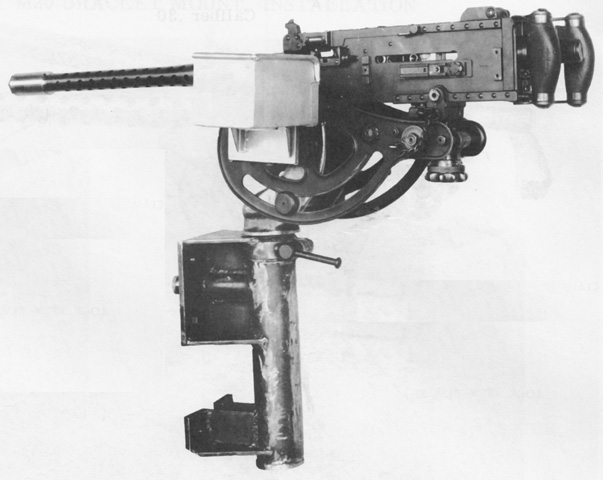
The antiaircraft elevator bracket is isolated in this image. This was the precursor of the bracket mount M20, with differences including the pintle clamp location, mounting pad details, and not having a finger lift cam in the position lock. (Picture from Weapon Mounts for Secondary Armament.)
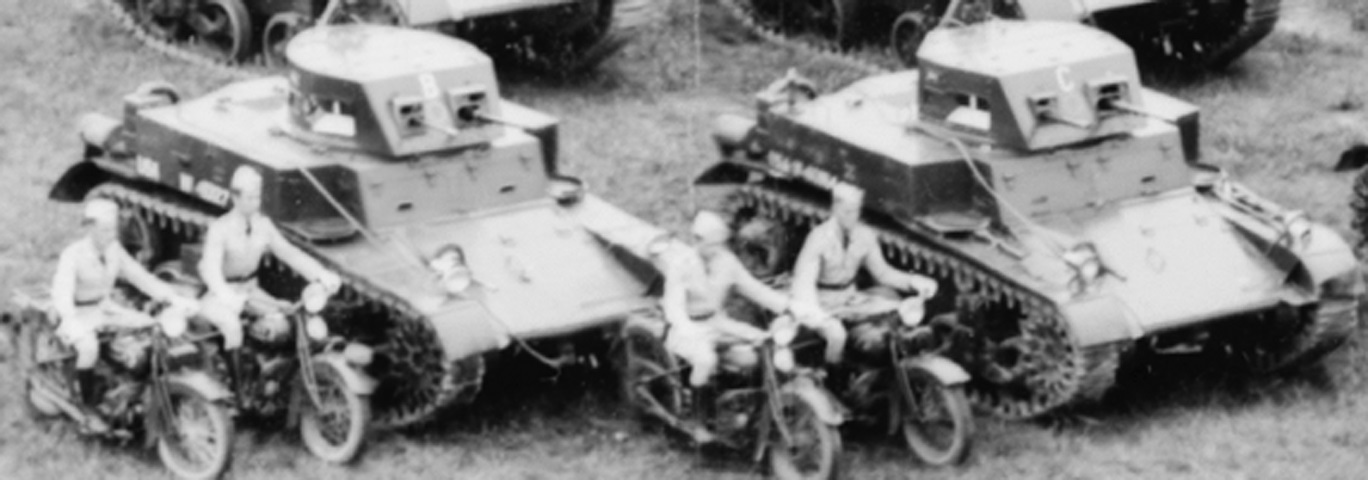
The initial round turret can be contrasted here with the octagonal version made of flat plates. The motorcyclists help to illustrate the diminutive size of these machines. Note the round, lipped trays at the front of the sponsons. These were for securing supplemental fuel drums. (Picture taken 1 Jul 1938 by E.O. Goldbeck; available from the Library of Congress.)
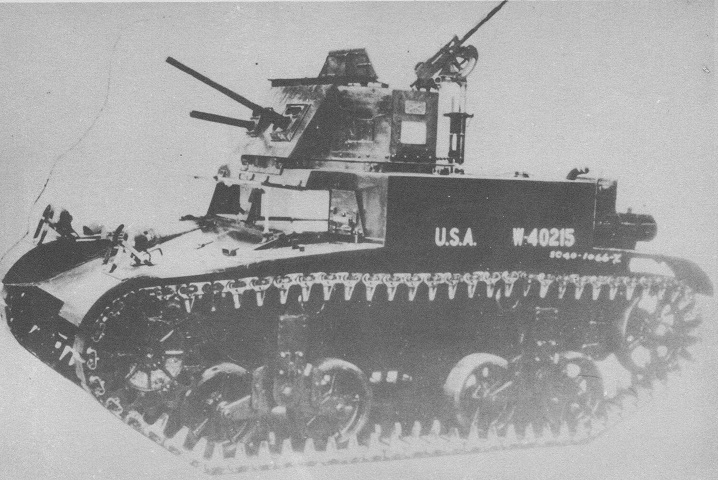
This M1A1 combat car showcases the octagonal turret fitted to later vehicles. The increased distance between the suspension bogies and the more rearward position of the idler are obvious when compared with the vehicle above. This combat car has all machine guns fitted, and all of the drivers' doors are open as well. The folding roof panels are positioned to provide protected vision for the turret crew. (Picture from Development of Armored Vehicles, volume 1: Tanks.)
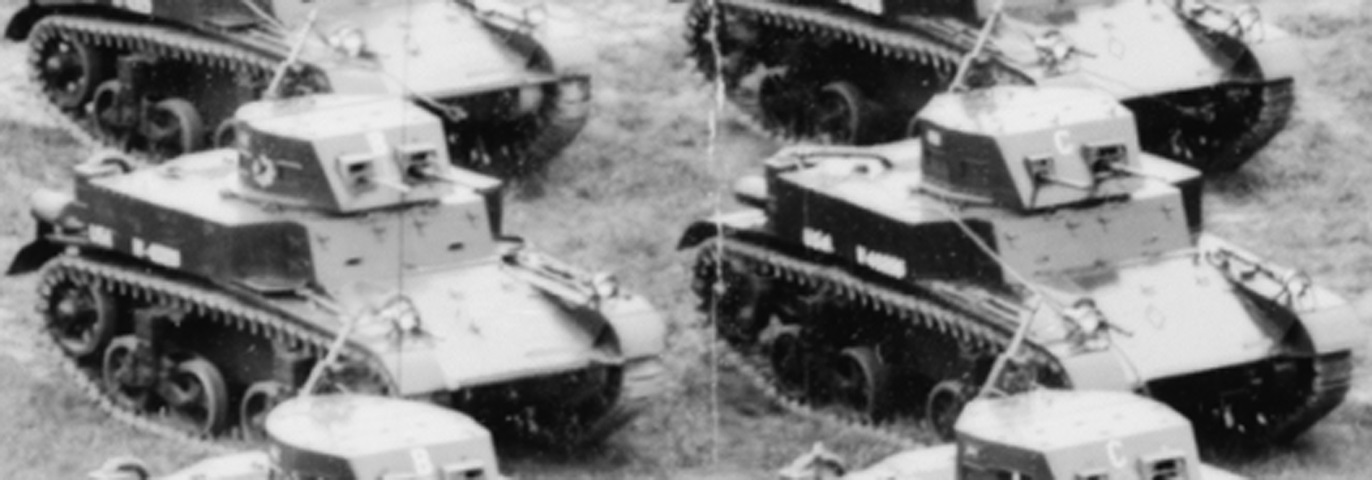
The increased suspension spacing introduced on the combat car M1A1 is easily seen in the right-hand vehicles. The longer piping from the engine air filter stretching across the rear deck on the right combat car indicates that is is a diesel-engined M1A1E1. The diesel-engined vehicle lacks the fuel drum trays in front of its sponsons. (Picture taken 1 Jul 1938 by E.O. Goldbeck; available from the Library of Congress.)